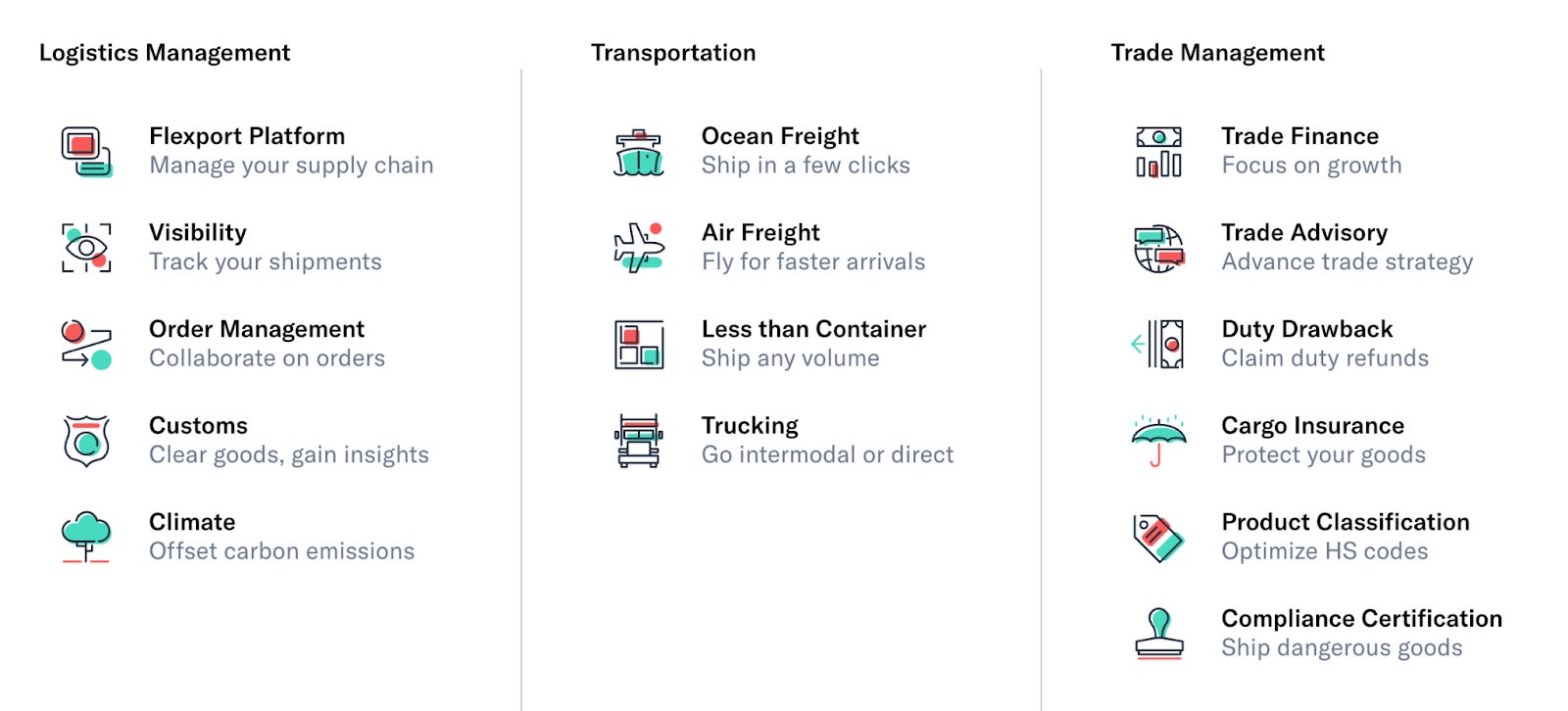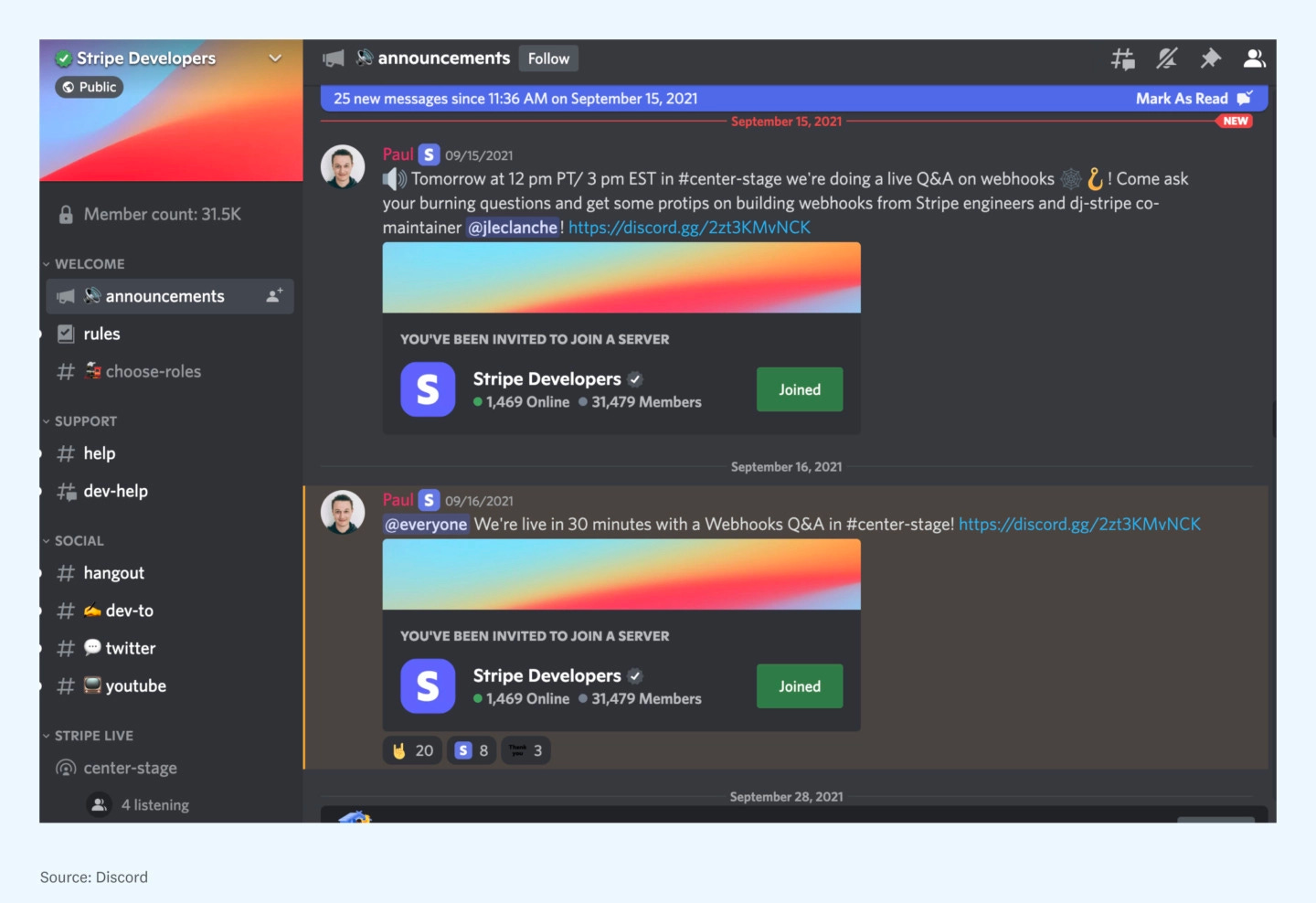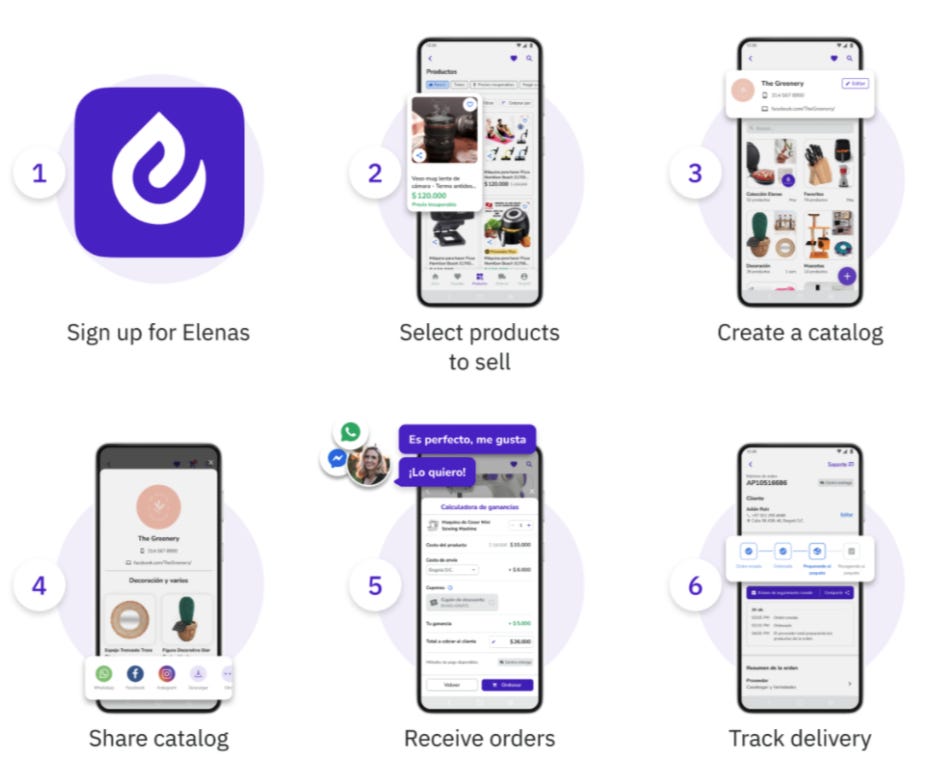🔎 Some topics we will cover this week
How to Drive Business Growth By Fostering Your Community
How to use your Superfans
Why China’s Version of Email Marketing Is So Effective
Discord: Users wanting to support the company!
The Quest to Become LatAm’s Social Commerce Leader
👉 How to Drive Business Growth By Fostering Your Community (Future)
❓ Why am I sharing this article?
I love the idea of creating a lot of tutorials.
Do you have a view of the M&A price of an education resources company?
Should we have a member / admin public forum?
Health challenges within companies could be fun.
Interesting ideas around retention.
Awareness:
The idea here is to provide a way for like-minded folks to gather either around your product specifically or around a professional area, which might be independent of the product itself. However, that professional development should then tie back to the company’s goals. This complements awareness and top-of-funnel activities perfectly, because at this stage there are lots of people talking about your company and, in so doing, pulling their own communities into your orbit.
Cloud provider DigitalOcean understands this well. Faced with competition from giants like Google, Microsoft, and Amazon, it turned to community as a differentiator. By nurturing a community of people around educational developer content like tutorials, talks, and events, DigitalOcean created an extensive content platform that attracts millions of people each month. It has now created more than 6,000 tutorials and is home to a forum containing 30,000 community-generated questions and answers.
Content:
Acquisition:
Support forums can also be instrumental for helping users get their product questions answered, so they can get up to speed and discover value sooner. With community members volunteering knowledge and answers, there’s less overhead on the company.
Activation:
Retention:
Customer success communities are particularly effective here. These are communities filled with product champions who are willing and eager to connect with each other and share best practices. Airtable’s Community Forum is an especially good example. This forum gives folks a place to dive deeper into questions about advanced product capabilities, like how to run automation scripts. On top of that, community members share a sense of pride in showing off their custom-built Airtable creations.
These product experts help other users, both novice and advanced, overcome product challenges and unlock new and interesting use cases, contributing to retention as well as activation. The work here is to provide users with a space to connect and trade knowledge, along with the tools and resources they need to show off their work.
But managing a community requires real, sustained investment and alignment with your GTM activities.
👉 Thread by Taylor Lagace on influencers (PingThread)
Micro: 10K - 100K Followers / Macro: 100K - 1M Followers.
A micro influencer may have a smaller following… But when you follow up for usage rights to the content they post - they'll often be so flattered, they'll grant such rights free of cost. Whereas a macro influencer would charge +$10K for 30 Days.
10 Micro Influencers > 1 Macro Influencer. Why?
1/10th of the cost
More content
More engagement
10 Creators making 2-3 pieces of content each gives you a LOT more to work with than 1 creator making 2-3 posts. 30 pieces of content > 3 pieces of content.
👉 How to use your superfans (Sifted)
Olivia Nottebohm is the chief revenue officer at Notion
We had two full-time people (out of a 50-person team) talking to ambassadors — which was unthinkable — but this is part of our success .
It’s important to have excellent, experienced talent to build value for the community.
Don’t underestimate the impact of even just one person who is incredibly excited about your product. We found 10 very excited people on Twitter and brought them together on Slack — that was the start of our community.
Give your community access to things standard customers don’t have.
Market the community. Use your marketing budget to retell the stories your ambassadors are already telling and to add fuel to the organic growth that already exists.
👉 Thread by Ryan Petersen (Flexport) (PingThread)
❓ Why am I sharing this article?
We are positioning Flexport to be the reference asset in this massive space, but the reality is the world is too big and too complex (and frankly, too screwed up) for us to do it alone.
To serve this critical need, Flexport and @BeOnDeck are joining forces to create a logistics and supply chain accelerator that will partner with companies to help reinvent the circulatory system of the world economy. We will invest $125k for 7% ownership in the most promising new companies in this space, and then we'll partner to help them create innovation and scale their businesses.
We’ll teach the founders high growth startup tactics that have allowed us to grow into one of the worlds largest shipping companies in just 8 years since we ourselves went through a startup accelerator @Ycombinator.
We are committed to bring the most founder-friendly investors in the world because we know what it's like to be in your shoes and annoying investors only hurt the companies (and themselves).
Link
👉 Flexport: How to Move the World (The Generalist)
❓ Why am I sharing this article?
Investing & Philantropy:
The company has made thirty-four investments, backing companies like CloudTrucks, Nuvocargo, Anvyl, and FreightPay.
It has also partnered with On Deck to create “ODX Flexport,” a fund that invests $125,000 for 7% of early-stage businesses in the logistics space. Along with the capital, funded startups receive support from a “Flexport Partner.” It is a savvy way for Flexport to insinuate itself into the next generation of logistics insurgents.
Second, in 2017, Flexport established a philanthropic arm. Flexport.org provides logistics support to non-profit organizations at discounted prices or pro-bono. It also offers simple carbon offsetting. The organization is currently delivering critical supplies to refugees displaced by the war in Ukraine.
Ambition:
➡️ Very important mindset. Focus on the high impact even if low probability of success ideas.
Product suite:
➡️ Stripe, Flexport have “big” product suites.
OCR, Machine Learning:
First, Flexport is devoting serious resources to digitizing global trade documents. Ingesting data from different languages and formats is the first step in building a library of “facts” around a shipment. Instead of “optical character recognition,” or OCR, Flexport relies on machine learning models developed with Scale AI. Whereas Flexport used to transform accurate data from documentation in two days or less, the recent partnership has helped the company do it in minutes while maintaining 95% accuracy. Chen noted that the reason accuracy sat short of 100% was not a technical issue but a result of human error at the outset.
👉 Reddit redesigns (Read Margins)
❓ Why am I sharing this article?
I get a bit emotional thinking about how important r/predaddit was in keeping me confident and sane up until the birth of my first kid.
Reddit: Investors promised 10 percent of their new equity in the company will be shared with community members
👉 Why China’s Version of Email Marketing Is So Effective (Future)
❓ Why am I sharing this article?
I love it and I really think it is how we should approach communities. I think they will be a cornerstone of our success. What good ideas does it give you from reading this?
I think that this notion of community would work very, very well for mental health and Alan Mind.
Ctrip, the biggest travel company in China, started something new a couple years ago. If you booked an international flight for a week-long vacation, you’d have the option of joining a group chat with other travelers who booked tickets to the same destination, around the same time.
There would also be a customer sales rep in the chat to act as a travel concierge before and during the trip. They’d answer questions about anything from what to do about a lost passport to which type of outlet converter to bring.
But the best part is, once your vacation starts, you’re not only asking the customer sales rep questions — often, you’re talking to other group-chat members too. You might ask how long the line at an amusement park is, or see who has sightseeing recommendations, or even invite people to meet up for dinner. Essentially, the group of strangers becomes a community.
👉 Discord: Imagine a Place (Not Boring)
❓ Why am I sharing this article?
Discord didn’t generate revenue — something that worried users.
Many assumed the company was selling customer data or prepping for an ad-based model; to quell concerns without having to alert competitors of their aspirations, Discord released “Nitro,” a paid subscription.
In exchange for a fee, users can access special perks like having multiple avatars, using custom emojis, and improving their video resolution.
It was a holdover that proved surprisingly effective. It’s a testament to the customer love Discord has engendered that what looks like a relatively thin offering has managed to produce so effectively.
Mac Reddin, a long-time Nitro subscriber, noted that the premium tier doesn’t give you much, but being a member allows you to support the company.
👉 To Start Building a Community, Master These Two Concepts (Future)
❓ Why am I sharing this article?
👉 Elenas: The Quest to Become LatAm’s Social Commerce Leader (The Generalist)
❓ Why am I sharing this article?
Social commerce advantages:
The Colombian company grew 70x over the past two years by giving low-income women a way to augment their income.
Social commerce companies benefit from low CAC.
Because social commerce companies leverage existing connections, they're able to acquire end customers at a fraction of the cost of a traditional e-commerce player.
That’s particularly true when it comes to acquiring customers in rural, low-income environments.
Elenas' acquisition is particularly impressive with this group, boasting a CAC of $1.
For Pinduoduo, that meant incentivizing customers to get their friends to join them in making a purchase – by turning a single order into a bulk one, customers unlock discounts.
Making everyone a seller:
Businesses like Elenas and Meesho operate by bringing offline commerce online. Part of their genius is that they require little to no behavioral change on the part of either buyer or seller – consumers make their purchases from their local salesperson just as they might have done before the advent of the internet.
Let's walk through how the platform works with an example.
Imagine we want to start a direct sales business of our own, Fox Beauty. We'd download the Elenas app on the Google Play Store to get started. Once up and running, we could quickly and easily create a company account, adding Fox Beauty's logo and other information.
Next, we need to decide what we want to sell. To do so, we can browse the product range on Elenas' marketplace, adding those we like to a digital catalog. The products we choose become the contents of our store.
It's time to sell. We can solicit sales across various platforms, including WhatsApp and Facebook, sending our catalog or individual items to friends and contacts. When potential customers open these links, they'll see relevant product information and pricing details. Using our personal relationships with these people, we can make tailored recommendations and suggestions. If we want to, we can also adjust pricing with complete visibility into how our margins are impacted.
➡️ Could we make anyone a broker? On our terms? It would be interesting to study their app.
👉 The ABCs of Bravado (Not Boring)
❓ Why am I sharing this article?
Sahil calls it “reverse engineering a SaaS company.” Instead of building software for salespeople and then bolting on a community of customers, a brand, conferences, and the like, Sahil started by building a free professional network for salespeople, like “StackOverflow for Sales”: one place where salespeople can go to get better at their jobs.
➡️ Do we have an equivalent for HR? How to think about the stackoverflow for HRs?
It was a slog, and after three years in the trenches, the community didn’t really take off until last year, when the company decided to make its message boards pseudonymous so that, unlike LinkedIn, “people can ask for real advice without bloviating.”
➡️ Applies to healthcare for communities (I love pseudonymous but vetted) and maybe for HRs too?
It’s already over! Please share JC’s Newsletter with your friends, and subscribe 👇
Let’s talk about this together on LinkedIn or on Twitter. Have a good week!



